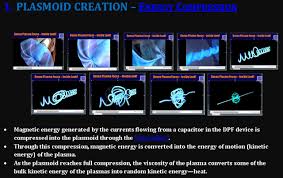Part 4 of 6 Parts (Please read Parts 1, 2, and 3)
Many experimental fusion reactors make use of the pinch effect. The reactors based on magnetic confinement use it. ITER is the biggest of this type of fusion reactor. There is great variation in the exact methodology among the different “pinch” reactor types.
The pinch effect has a tendency to introduce instabilities in a plasma. The main approaches to fusion reactor research, such as ITER, try to prevent and suppress all instabilities. They attempt to keep the plasmas as stable and quiet as possible. The goal is to reach a steady state condition with continuous energy generation. Plasma instabilities are not just an operational problem because they can also cause severe damage to a reactor.
What sets the work at LPP Fusion apart from much of the current nuclear fusion research is that their DPF approach actually exploits instabilities as the main mechanism for reaching the fusion conditions they are seeking. This approach of utilizing instabilities instead of suppressing them is one of the main reasons why other researchers have avoided this approach in their attempts to develop fusion energy.
The dense plasma focus achieves the conditions necessary for fusion in a series of stages. The process is far too quick for the human eye to perceive. The whole discharge process only lasts for about two millionths of a second. However, there are ultrafast cameras and other instruments that can capture and document every stage.
In Stage 1, the pinch effect causes the originally smooth and uniform plasma sheath around the anode to break up into an array of dense current filaments that run radially between the anode in the center and the cathode around the periphery. These filaments have a characteristic vortex structure. This structure was extensively researched and documented by plasma physicists Winston Bostick and Vittorio Nardi beginning in the 1970s.
In Stage 2, electromagnetic fields create the pinch effect which causes the filaments to travel along the central axis of the DPF device towards the open end of the electrodes. When the filaments reach the ends of the electrodes, they bend around as if they were jets of water in a fountain and some filaments actually reach back down into the open end of the hollow anode in the center. Inside the anode, the filaments are forced closer together. This causes the filaments to attract each other. The filaments merger together into a single narrow filament of plasma.
In Stage 3, the complex electromagnetic interactions cause the pinched filament of plasma to become unstable. This is referred to as the “kinking” instability. Nearby windings of plasma attract each other because of the pinch effect. The coiling filament of plasma becomes all tangled up and forms into a single tight structure called a plasmoid.
The plasmoids in LPP Fusions experimental DPF devices are extremely tiny. They are only a fraction of a millimeter across which is about one millionth of the original plasma volume. Most of the energy of the discharge is now concentrated in the tiny space of the plasmoid. The plasma is confined and compressed by the extremely powerful magnetic fields generated by the plasma filaments. Inside the plasmoid, the energy of the rapidly-moving electrons and ions is transformed into heat. This generates temperatures of nearly three billion degrees.
At these temperatures, large numbers of fusion reactions take place. The total fusion output is dependent on a combination of the temperature, the fuel’s density in the plasmoid and the length of time that the plasmoid exists.
In Lerner’s experiments, the plasmoid only exists for about ten billionths of a second. Because of this, a major focus of research at LPP Fusion is to increase the density of the plasmoid as much as possible. A great deal of progress has been made but there is still a long way to go.
Please read Part 5 next
Plasmoid formation
Nuclear Fusion 81 – LPP Fusion Is Working On Dense Plasma Fusion For Commercial Power Generation – Part 4 of 6 Parts

